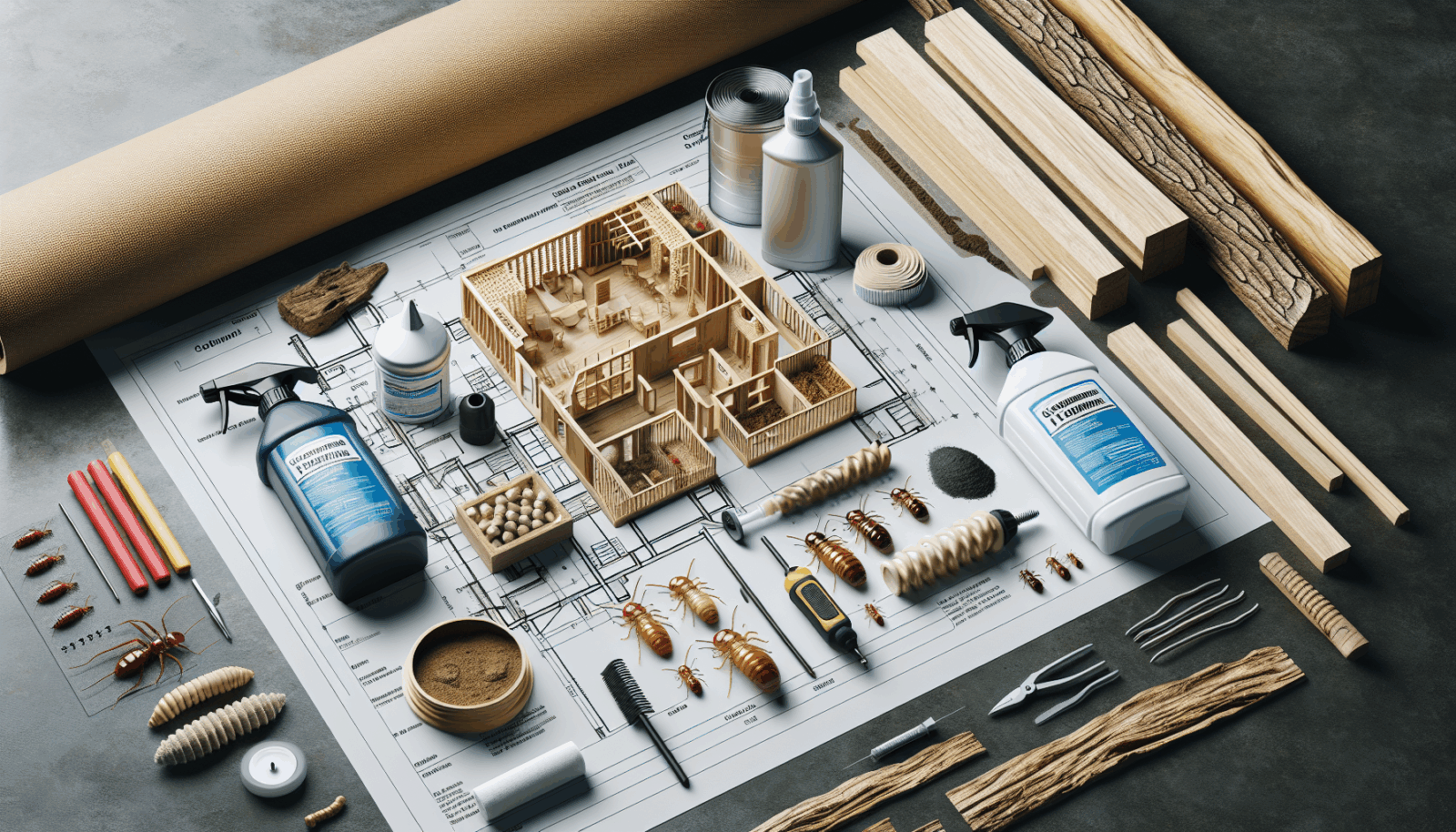Termites are quiet. They don’t bang on doors or call for help. They just eat — sometimes for months — behind your walls, under your floors, in the cooling shade of your patio. If you own a home in Maricopa County, you’ve probably heard the horror stories. But honestly, there’s plenty you can do to stop them. Here’s a friendly, clear guide to the top techniques for structural termite control that actually work around here — practical, a little technical when needed, and grounded in what local pros see every season.
Contents
- 1 Quick note: what we’re up against
- 2 Start with the basics — moisture and maintenance
- 3 Liquid soil treatments — the tried-and-true barrier
- 4 Baiting systems — smarter, slower, social
- 5 Wood treatments and localized remedies
- 6 Physical barriers and construction methods — build smarter
- 7 Inspection, monitoring, and the power of routine
- 8 Seasonal timing — yes, Arizona matters
- 9 DIY vs professional — when to call the pros
- 10 Final thoughts — keep calm, act fast
- 11 Ready to protect your home?
Quick note: what we’re up against
First, let’s name names. In Maricopa County the usual suspects are Subterranean termites (the most common) and Drywood termites (the sneaky ones that can live in a single beam). Subterranean colonies need moisture and soil contact. Drywood ones don’t. That means the approach for each is different. You’ll see treatments overlap, and you’ll also see methods that seem contradictory — but they make sense when you read on.
Start with the basics — moisture and maintenance
Here’s the thing: the simplest steps are often the most effective. You can spend a fortune on treatments, but if your house stays damp, termites will keep coming back. Fix leaks. Grade soil away from foundations. Keep gutters clean. Don’t store firewood against the house. It sounds obvious, but you’d be surprised.
- Address water first: Repair roof and plumbing leaks fast; install drip pans under HVAC units; add splash blocks to downspouts.
- Cut off access: Trim vegetation away from siding and screens; seal cracks where utilities enter.
You know what? A dry, well-ventilated crawlspace can prevent hours of headache and thousands in repairs. Seriously.
Liquid soil treatments — the tried-and-true barrier
Liquid termiticides create a chemical barrier in the soil around a structure. Professionals apply them in trenches or through injection points. Two brand names you’ll hear are Termidor and Fipronil-based products. Why do pros like these? Because certain formulas deliver long-lasting protection and can stop worker termites from reaching your wood.
Let me explain in plain terms: think of the Treatment as an invisible moat. Termites cross it and carry the chemical back to the colony. It’s effective, especially for subterranean colonies with soil access. But — and here’s the mild contradiction — a barrier only works if it’s continuous and properly installed. Gaps, future landscaping, or digging can break the defense. So regular checks matter.
Another major technique is baiting. Sentricon is the brand name you’ll hear most. These systems use bait stations in the ground that termites feed on and then share. Over time, the colony dwindles. It’s a social strategy, almost like setting a slow-acting trap because termites share food among nestmates.
Advantages: less trenching, targeted, and it’s neat for neighborhoods where you worry about wide chemical use. Downsides: it can take longer to see results compared with a quick liquid barrier. Patience pays here.
Wood treatments and localized remedies
For drywood termites — or smaller, contained infestations — you don’t always need to treat soil. Wood treatments like Bora-Care (a borate product) or Tim-bor penetrate wood and protect it from future attack. These are commonly used in remodels or when replacing damaged wood.
Local pros will also use spot treatments: injecting termiticide into galleries, using heat or spot fumigation on a room. Fumigation (tenting) is the big hammer for heavy drywood infestations in homes where the colony is extensive. It’s effective, thorough, and yes — disruptive. You’ll need to vacate the house for a few days. But after the tent comes down, the infestation is gone.
Physical barriers and construction methods — build smarter
For new construction, physical barriers give passive, long-term protection. Stainless steel mesh, sand barriers, and special shields go between soil and wood. You don’t want to retrofit every home with them, but for new builds, they’re a solid investment.
Inspection, monitoring, and the power of routine
Termites are patient. You need to be less patient. Regular Inspections — at least annually — catch problems early. Professionals use moisture meters, infrared cameras, and even acoustic detection tools when needed. You can walk around your home quarterly, check for mud tubes (a telltale sign of subterranean termites), and listen for hollow sounds in wood.
Mild repetition here: inspect regularly. Inspect regularly. It’s that simple. Small issues found early mean smaller bills later.
Seasonal timing — yes, Arizona matters
In Maricopa County, the monsoon season (roughly June to September) and our warm winters change termite behavior. Heavy rains push termites from saturated soil into your structure; swarms often show up after a rain. So plan inspections after monsoon storms. Treatments applied before the wet season can be more durable, but sometimes it’s better to wait until swarm season passes — your service provider will advise.
DIY vs professional — when to call the pros
Look, you can do a surprising amount yourself: reduce moisture, remove wood debris, do basic inspections, and apply surface borates during a remodel. But termite control is a technical trade. Professionals bring tools, insurance, and experience. They also know local regs and which products the Arizona state departments approve. For whole-house infestations or if you’ve seen structural damage, call a licensed technician. It’s safer and usually less costly in the long run.
Final thoughts — keep calm, act fast
Termite control isn’t about a single miracle treatment. It’s a layered approach: reduce moisture, inspect often, use barriers or bait systems where they fit, and treat wood when needed. Some solutions are fast; others are patient. That mix — a belt-and-suspenders approach — gives your home the best chance. You don’t have to become a pest-control nerd, but a little knowledge goes a long way.
Ready to protect your home?
If you’re in Maricopa County and want a real plan — practical steps, honest pricing, and a technician who speaks plain English — call Arizona Termite Control at 480-660-3093 or Request a Free Inspection. Seriously, the sooner you check, the better. You’ll sleep easier knowing the problem’s being handled before you wake up to a costly surprise.




